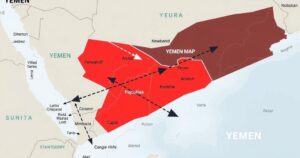Regional Dynamics of the DR Congo Crisis: Key Actors and Their Interests

The crisis in the Democratic Republic of Congo, ignited by M23 rebel activity in the eastern region, has drawn in multiple neighboring countries and raised humanitarian concerns. Key figures include Congolese President Félix Tshisekedi, who blames Rwanda for supporting M23, and Rwandan President Paul Kagame, who defends his actions as necessary for national defense. The roles of Burundi, Uganda, and South Africa further complicate the regional dynamics and tensions surrounding the conflict.
The ongoing crisis in the Democratic Republic of Congo (DRC), initiated by the M23 rebels’ seizure of territory in the mineral-rich eastern region, has evolved into a multifaceted humanitarian and diplomatic situation involving several neighboring nations. This vast country, equivalent to two-thirds the size of Western Europe, is influenced by both East and Southern African blocs, which are convening an emergency summit to address the escalating violence.
President Félix Tshisekedi of the DRC is primarily focused on reclaiming lost territories, particularly the strategic town of Goma, and preventing further incursions by the M23 rebels. He has accused Rwandan President Paul Kagame of backing the M23 through military support, asserting that Rwanda aims to exploit the DRC’s mineral resources and disrupt the current regime. Despite international awareness of Rwanda’s involvement, tangible actions against Kigali have yet to materialize.
Rwanda’s Kagame, often an elusive player in the narrative, deflects direct allegations of military support for the M23 while emphasizing his nation’s right to self-defense. He claims that his objectives revolve around neutralizing Hutu-led armed groups that pose threats to Rwandan security, including those advancing into DRC. Within this complex framework, Rwanda seeks to sustain its influence in the eastern DRC while contending that the conflict is primarily a domestic Congolese issue.
Burundi, sharing borders with both Rwanda and DRC, perceives the situation with caution. The Burundian military has been involved in combating M23 forces while simultaneously safeguarding its regime from the implications of Rwandan maneuvers. President Evariste Ndayishimiye has issued warnings against Rwandan advances, asserting that a spillover of conflict could destabilize Burundi, which is already grappling with its internal challenges.
Uganda’s involvement in the crisis remains complex, as it has troops operating in eastern DRC against militants tied to the Islamic State. However, reports suggest Uganda’s ambiguous support for the M23 while assisting Congolese forces presents a precarious balance of interests, particularly regarding regional stability and resource control in the gold-rich territories.
South Africa, primarily through its troop contributions to the Southern African Development Community (SADC), is engaged in efforts to maintain peace alongside the Congolese army. However, tensions between Pretoria and Kigali have escalated following accusations from South African officials regarding the conduct of Rwandan forces, fueling further divisions between the East African Community (EAC) and SADC regarding their respective roles in the crisis and diplomatic approaches.
The crisis in the Democratic Republic of Congo underscores the complex interplay of regional power dynamics, with major players including the DRC, Rwanda, Burundi, Uganda, and South Africa. Each nation’s involvement is driven by a mixture of security concerns, economic interests, and historical grievances. As these countries navigate the volatility of the situation, the potential for regional escalation remains a pressing concern. Efforts to mediate the conflict continue, yet the lack of coordinated international action and competing narratives complicate the restoration of stability in the DRC, highlighting the need for a unified regional response to effectively address the crisis.
Original Source: www.bbc.co.uk








